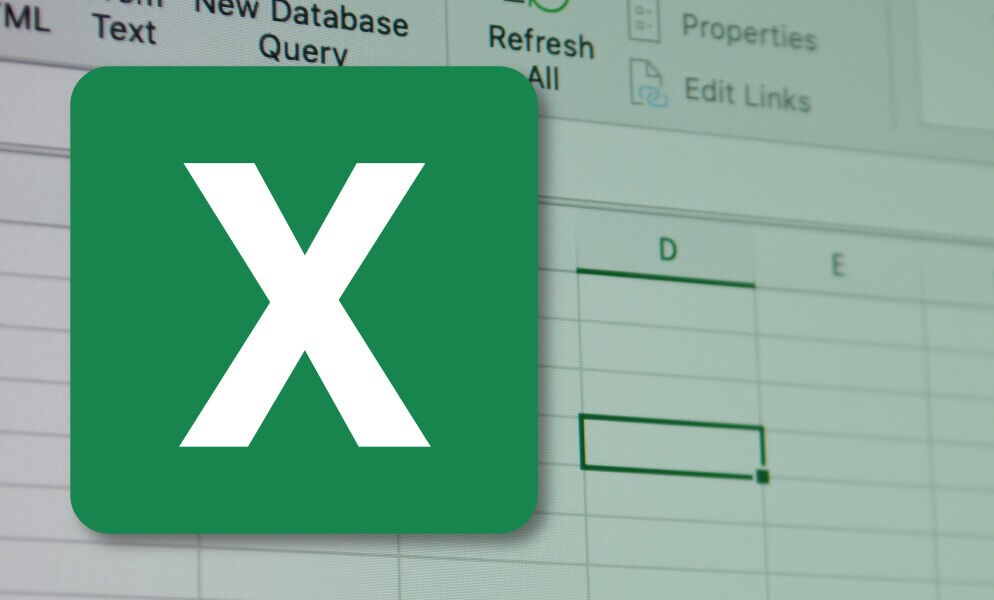
Introduction to Excel: Understanding the Basics
Getting started with Microsoft Excel involves understanding its basic interface and navigation. When you open Excel, you’ll see a grid made up of cells, which are the foundation of any spreadsheet. These cells are organized by columns (labeled with letters) and rows (labeled with numbers). Each cell is identified by a unique reference, such as A1 for the first cell in column A and row 1. You can input text, numbers, or formulas into these cells to perform calculations and organize data.
Navigating the Excel interface is simple once you get familiar with its layout. The ribbon at the top of the screen is divided into tabs, each containing various tools and options for formatting, data analysis, and chart creation. For example, the “Home” tab lets you format text and numbers, while the “Insert” tab provides options for adding charts, tables, and images. Learning how to access these tools is essential for mastering the basics and expanding your knowledge of Excel.
To effectively learn Microsoft Excel spreadsheets, it’s important to practice basic actions like entering data, saving files, and performing simple calculations. Understanding how to move between cells, create new worksheets, and format your data will help you build a strong foundation. Excel’s intuitive design makes it easy to explore and apply new skills, allowing you to develop your spreadsheet abilities quickly. Once you’re comfortable with the interface, you can begin exploring more advanced functions and tools.
Essential Formulas and Functions
When you start to learn Microsoft Excel spreadsheets, mastering essential formulas and functions is a key step. One of the most commonly used formulas is the SUM function, which adds together a range of numbers. For example, if you have a list of sales figures in cells A1 to A10, using the formula =SUM(A1:A10) will quickly calculate the total. This saves you from manually adding numbers, making it ideal for large data sets.
The AVERAGE function is another valuable tool, allowing you to find the average of a group of numbers. This is useful for tasks like analyzing sales trends or determining average expenses. By using =AVERAGE(B1:B10), Excel will automatically calculate the average for the range in column B. These basic functions simplify data analysis and provide insights without requiring complex manual work.
More advanced functions, such as IF and VLOOKUP, offer even more flexibility. The IF function allows you to set conditions and return different results based on whether those conditions are met. For instance, =IF(C1>1000,"High","Low") can classify data based on set criteria. Meanwhile, VLOOKUP helps you search for specific data within a table. Using =VLOOKUP(D2, Table1, 3, FALSE) lets you pull information from a table based on a given value. These formulas greatly enhance efficiency as you learn Microsoft Excel spreadsheets and dive into more complex tasks.
Using Pivot Tables for Data Analysis
Pivot tables are one of the most powerful tools in Excel, especially when working with large datasets. They allow you to summarize, sort, and analyze data efficiently without the need for complex formulas. Pivot tables help you organize data in a way that provides clear insights, enabling better decision-making for your business. By grouping data and applying various filters, you can extract meaningful trends and patterns quickly. For those looking to learn Microsoft Excel spreadsheets, mastering pivot tables is essential for handling complex data analysis.
To create a pivot table, start by selecting your dataset and clicking on the “Insert” tab, then choose “Pivot Table.” Excel will prompt you to select the data range and the location for your table. Once the table is created, you can drag and drop fields into the rows, columns, and values areas to rearrange your data. For example, you can easily summarize sales by product category or region. This flexibility allows you to view your data from multiple perspectives and answer business questions more effectively.
Pivot tables are also useful for sorting and filtering large datasets. You can easily apply filters to narrow down data or sort values based on specific metrics, such as top-performing products or highest revenue by region. This makes pivot tables an invaluable tool for analyzing trends and generating reports. If you’re aiming to learn Microsoft Excel spreadsheets and improve your data analysis skills, pivot tables will significantly enhance your ability to handle complex information and make data-driven business decisions.
Creating Charts and Graphs
Creating charts and graphs in Excel is an excellent way to visually represent data, making it easier to interpret trends and patterns. Charts transform numbers into meaningful visuals, helping you present your findings more clearly. When you learn Microsoft Excel spreadsheets, knowing how to create different types of charts is essential for effective data presentation. Bar charts, pie charts, and line graphs are among the most commonly used options, each suited to different types of data analysis.
Bar charts are ideal for comparing values across different categories. To create a bar chart, select your data, then go to the “Insert” tab and choose the bar chart option. This type of chart makes it easy to compare data like sales performance across different regions or product categories. Bar charts are particularly useful when you need to display categorical data side by side, offering a clear visual comparison.
Pie charts, on the other hand, are perfect for showing proportions. For instance, if you want to represent the percentage of sales each product contributes to the total, a pie chart provides a simple visual breakdown. Like bar charts, pie charts can be created by selecting your data and choosing the pie chart option from the “Insert” tab. Finally, line graphs are best used to show trends over time, such as tracking monthly sales or stock performance. These visuals make it easier to spot growth patterns or declines, which can help in forecasting.
Learning to use these charts effectively will significantly enhance your data presentation skills. As you continue to learn Microsoft Excel spreadsheets, mastering charts and graphs will allow you to communicate complex data in a more accessible and visually engaging way.
Conditional Formatting and Data Validation
Data validation and conditional formatting in Excel are powerful tools for organizing and managing data more efficiently. Conditional formatting helps highlight specific data based on set criteria, making it easier to spot trends or outliers. For example, you can use it to highlight cells with values above or below a threshold. This method helps you focus on key data points quickly. To apply it, select your data, go to the “Home” tab, and click “Conditional Formatting.” You can then choose predefined rules or create custom conditions as needed.
Data validation ensures the accuracy of data by restricting what can be entered into specific cells. This is especially useful when you need to allow only dates or numbers within a certain range. To apply data validation, select the cell or range, go to the “Data” tab, and click “Data Validation.” From there, you can set rules for acceptable inputs, such as limiting choices to a list or setting a maximum and minimum value.
Both conditional formatting and data validation are essential for maintaining clean, organized datasets. As you learn Microsoft Excel spreadsheets, mastering these tools will help you analyze data more effectively and reduce errors. These features improve spreadsheet functionality, leading to better decision-making and reliable results.
Excel Tips for Boosting Productivity
Boosting productivity in Excel can make a huge difference in how efficiently you work with data. One of the best ways to save time is by learning keyboard shortcuts. For example, using Ctrl + C to copy and Ctrl + V to paste are common shortcuts, but Ctrl + Shift + L to apply filters or Alt + = to auto-sum selected cells can significantly speed up your workflow. Memorizing these shortcuts will help you navigate faster, making it easier to manage and analyze your data. If you’re looking to learn Microsoft Excel spreadsheets more effectively, mastering shortcuts is a must.
Another productivity tip is utilizing the auto-fill feature. This function allows you to quickly fill cells with patterns, such as days of the week or sequential numbers, by simply dragging the fill handle. For example, if you enter “Monday” in one cell and drag the handle down, Excel will automatically fill the following cells with the rest of the week. This feature works well with both text and formulas, reducing the need for manual entry. By learning to use auto-fill, you can complete tasks faster and focus on more important analysis.
Excel’s data visualization tools also enhance productivity. You can create charts, graphs, and sparklines with just a few clicks, allowing you to present data visually without complex formatting. This saves time when preparing reports or presentations. To generate a chart, select your data and press Alt + F1 to insert a default chart immediately. Visualizing your data helps in making quicker decisions and presenting findings more clearly. As you continue to learn Microsoft Excel spreadsheets, integrating these advanced tips will streamline your work and improve overall efficiency.
Conclusion
In conclusion, as you learn Microsoft Excel spreadsheets, mastering essential tools like formulas, pivot tables, and charts will greatly enhance your efficiency. These features help you manage data effectively and make more informed decisions. By incorporating advanced tips like keyboard shortcuts and data validation, you can streamline your work and avoid errors. Excel offers a wide range of capabilities, from basic functions to complex data analysis, making it an invaluable tool for business and personal use. Continual practice and exploration of these features will help you unlock Excel’s full potential and boost your productivity.
Check out our Microsoft Excel course.


